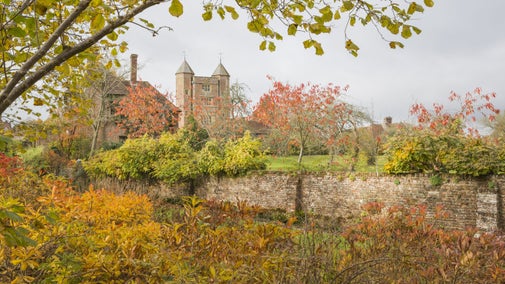
Discover more at Scotney Castle
Find out when Scotney Castle is open, how to get here, the things to see and do and more.
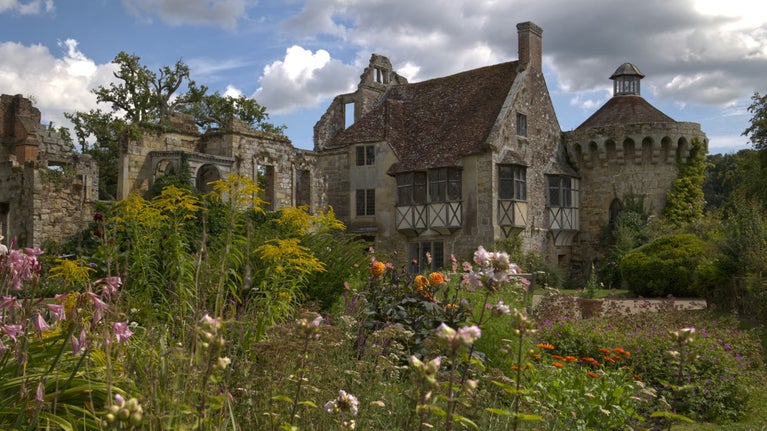
With the garden and estate at Scotney Castle covering more than 780 acres there is plenty to see, from the moated ruined 14th-century castle to the walled garden and Grade I listed parkland. There are wonderful views to take in as you explore the landscape through the different seasons.
The garden was created in the late 1830s at the same time as the house allowing the two to work together to create the perfect country home. The then owner, Edward Hussey III, had the vision to transform medieval Scotney Castle from a damp and derelict dwelling into a charming ruin that would become the centrepiece of his romantic and naturalistic landscape. Working with architect, Anthony Salvin and landscape designer, William Sawrey Gilpin, Scotney Castle represents one of the last and most successful expressions of the Picturesque movement.
The view from the semi-circular Bastion above the Quarry Garden to the moated castle ruin is breath-taking in all seasons, whether it is bare frost-covered branches and mist rising from the moat in winter, the colourful azaleas, rhododendrons and kalmia in spring and summer, or the flaming reds and oranges of the acers in the autumn.
In summer, the old English roses clambering up the walls of the Old Castle and the surrounding herbaceous beds provide picture-perfect backdrops. The grass terraces around the house are deliberately left long to protect and encourage the rare green-winged orchids that flower there in spring. This plant was in decline after the Second World War but, thanks to this management approach, they now thrive in these lawns alongside many other species of wildflower.
Wandering through the garden you will also discover the quarry garden, the ice house thatched with heather, the Victorian boat house on the moat and the old bowling green as well as the chalybeate spring, acres of wild meadows, giant sequoias, and the stream that feeds the castle moat. You will also find the Badger and Pepper play area for younger children.
Before you leave Scotney, be sure to visit the peaceful one-acre walled garden. Built around 1840 to provide the Hussey household with fresh fruit and vegetables, its unusual octagonal shape maximises the amount of growing space for the fan-trained and espaliered fruit trees. Varieties of apricot, peach, cherry, plum, greengage, apple, quince and pear growing here. Other features of note are the original watering-can dipping pond and, in the far left corner, a huge and ancient crab apple tree which is covered in white blossom in spring.
The Scotney Castle estate has a long and varied history and the ancient parkland and Wealden woodlands surrounding the house and garden are criss-crossed by waymarked routes, offering fantastic views of the castle, garden and house.
Grade I listed, the parkland is full of magnificent veteran trees inlcuding what is believed to be the oldest hornbeam tree in the country, showing its association with a formal dwelling for over 1,000 years. The woodlands are characteristic of the Wealden landscape and cover 300 acres of the estate; they boast connections with wood-pasture, charcoal production, iron working and the once-lucrative hop industry.
Scotney is the only National Trust property to have a working hop farm and the tenant farmer at Little Scotney Farm still grows, picks and dries hops which are then used by a local brewery to make craft beers, some of which you can buy in the Scotney shop.
The native-breed Sussex cattle have been a proud feature of the landscape since Victorian times. Our archives show handwriten records of the first herd of Sussex cattle being acquired in 1896. Click the button below to read how we have reintroduced cattle to the estate for conservation grazing.
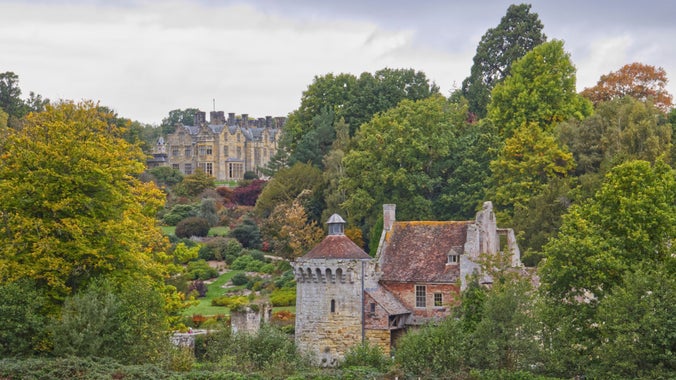
As late summer eases into autumn, the herbaceous border at the old castle moves into its final phase of colour before resting for the winter. Fiery orange dahlias, star-like pink and purple Michaelmas daisies, and sedum and achillea in autumnal hues make sure it goes out with a dazzling firework display of colours.
Slightly tucked away, the West Glade can often be missed by visitors but, with its waterways, islands, winding paths and towering redwoods, it is a delightful place to walk and sit. Look out for the pretty strawberry-like fruits and vivid orange leaves of the Cornus kousa tree.
On the Boat House Island is the Liquidamber or Sweet Gum, probably Scotney's most dramatic tree for autumn colour. Its stunning leaves, turning green to purple, crimson, orange and yellow reflect back from the moat doubling its imact. But all across the garden the trees will be putting on their autumn colours: the yellow cat-faced leaves of the Tulip trees, the copper and purples of the ancient acers in the Quarry Garden, and the spectacular orange and russet of deciduous conifer, the Swamp Cypress.
In the Walled Garden it's harvest time for squash, pumpkins, apples, quince and pears. Elsewhere it's time to start to get the garden ready for bed. In West Glade the giant, prehistoric-looking Gunnera will be cut back, their leaves piled onto their tender crowns to give protection over the winter, and the grassy banks around the mansion house and the meadows beyond will be mown. This deliberate conservation management technique gives time for the rare green-winged orchids and other wildflowers that bloom here in spring to set their seed.
Fungi start to appear in the garden and on the estate. Look out for fairy rings of parasol mushrooms and stunning fly agarics as well as ink caps, puffballs and scarelet waxcaps. For a wonderful autumn walk, head out of the garden and onto the estate to Kilndown Woods with its leaf-carpeted woodland floor and stunning ancient beech avenue arching overhead.
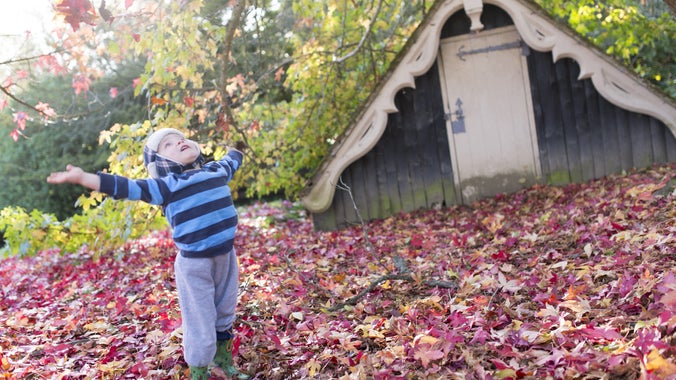
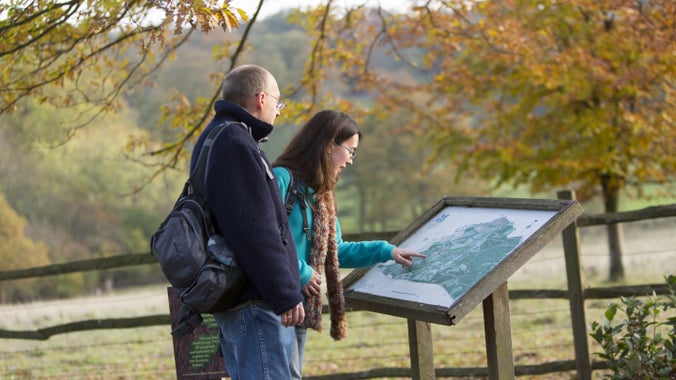
Between March and early November you can join one of our estate guides on a tour around the estate to see seasonal flora and fauna and learn about the history of Scotney.
These guided estate walks are scheduled to run seven days a week, twice a day at 11.30am and 2pm and last around 90 minute. They are led by our volunteer guides and occasionally we do have to cancel a walk due to absence. This can sometimes be at short notice. If you are planning to visit Scotney specifically for the guided estate walk we suggest you call us on 01892 893820 before you set off on the day to confirm.
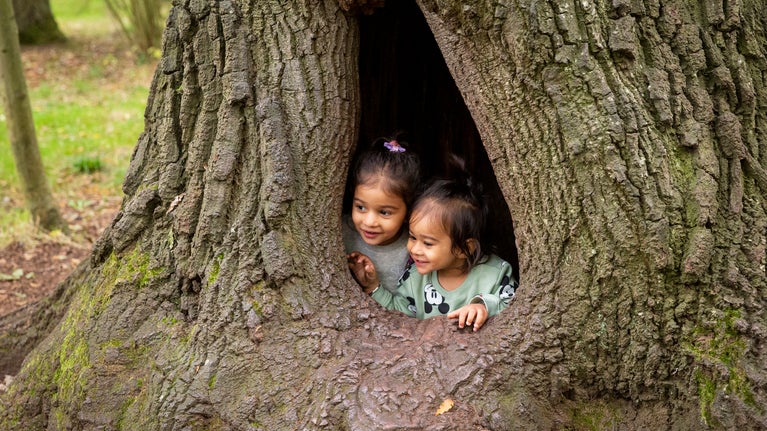
Much of the garden has accessible all-weather paths and, with 780 acres of wider estate, there's lots of space for little legs to run, cllmb, explore and let off steam. Look out for the giant tree swing by the new orchard.
For den-making and wild play head to Colliers Wood or, for younger children, the Badger and Pepper play area has musical instruments, a toddler swing, play hut, ball chute and mud kitchen.
There are buggy-accessible toilets and changing facilities in the Courtyard and children's lunch boxes are available in the tea-room.
See how many of your '50 things' you can tick off, or check the Scotney What's On boards or web pages to find details of additional events and activities for families and children.
Picnic blankets are welcome in the garden, however chairs and tables can only be used on the wider estate. If you enjoy a picnic on the estate please be aware livestock may be present. Dogs must be kept on a lead at all times and please take all your litter home with you. (There are rubbish bins in the tea-room courtyard if you need them.)

Find out when Scotney Castle is open, how to get here, the things to see and do and more.
Discover how we're working with Kent Wildlife Trust to help manage the grassland on part of the Scotney estate.

Whether you're enjoying a walk through the estate together, soaking up the beauty of the formal garden or popping in for a cuppa, here's everything you need to know about bringing your dog to Scotney Castle, a 3 paw print National Trust place.

From secret doors to ornate furniture and amazing collections of art, costume, books and silverware, find out about the house at Scotney Castle and how the Hussey family made it a home.

Discover our glorious spring/summer range in our main Courtyard shop. Pick up a perfect new accessory for yourself or your home - from gorgeous garden goods and wonderful printed scarves to embroidered cushions and beautiful ceramics. And do pop into the second-hand bookshop by the Visitor Entrance before you leave to discover some bargain recycled reads.
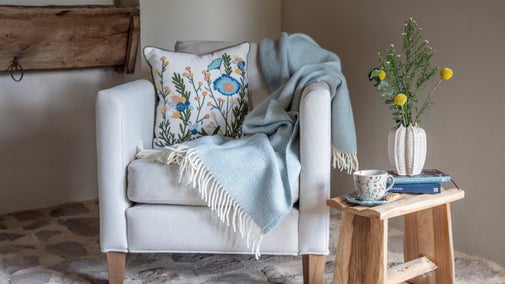
There's nothing better than a warm spring day: fresh air, sunshine and food enjoyed in the outdoors. Whether you're going for the full lunch option or just a snack to keep you going 'til tea, there's a full range of savouries and bakes to entice you. And if the English weather doesn't play ball there'll always be jacket potatoes and fish finger sandwiches ...

From 18th-century water gardens and Arts and Crafts landscapes to intimate woodland gardens, there are so many places to discover.
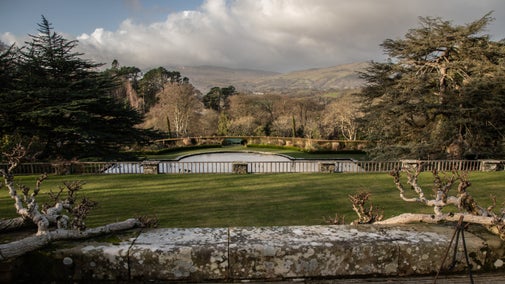
Discover our gardeners’ top tips so you can make the most of your garden, plot or window box.
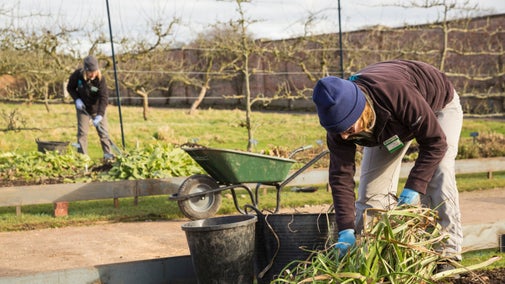
Wander through the National Trust’s autumn gardens in Kent, where golden foliage and late-season blooms create a tapestry of rich colour and texture. Admire the russet tones and crisp air at Sissinghurst Castle, stroll through the mellow hues of Chartwell’s borders, and enjoy the romantic reflections of autumn leaves in the moat at Scotney Castle. From fiery rudbeckia and amber lilies to Japanese anemones and ornamental grasses swaying in the breeze, Kent’s historic gardens offer a serene and striking celebration of the season.
